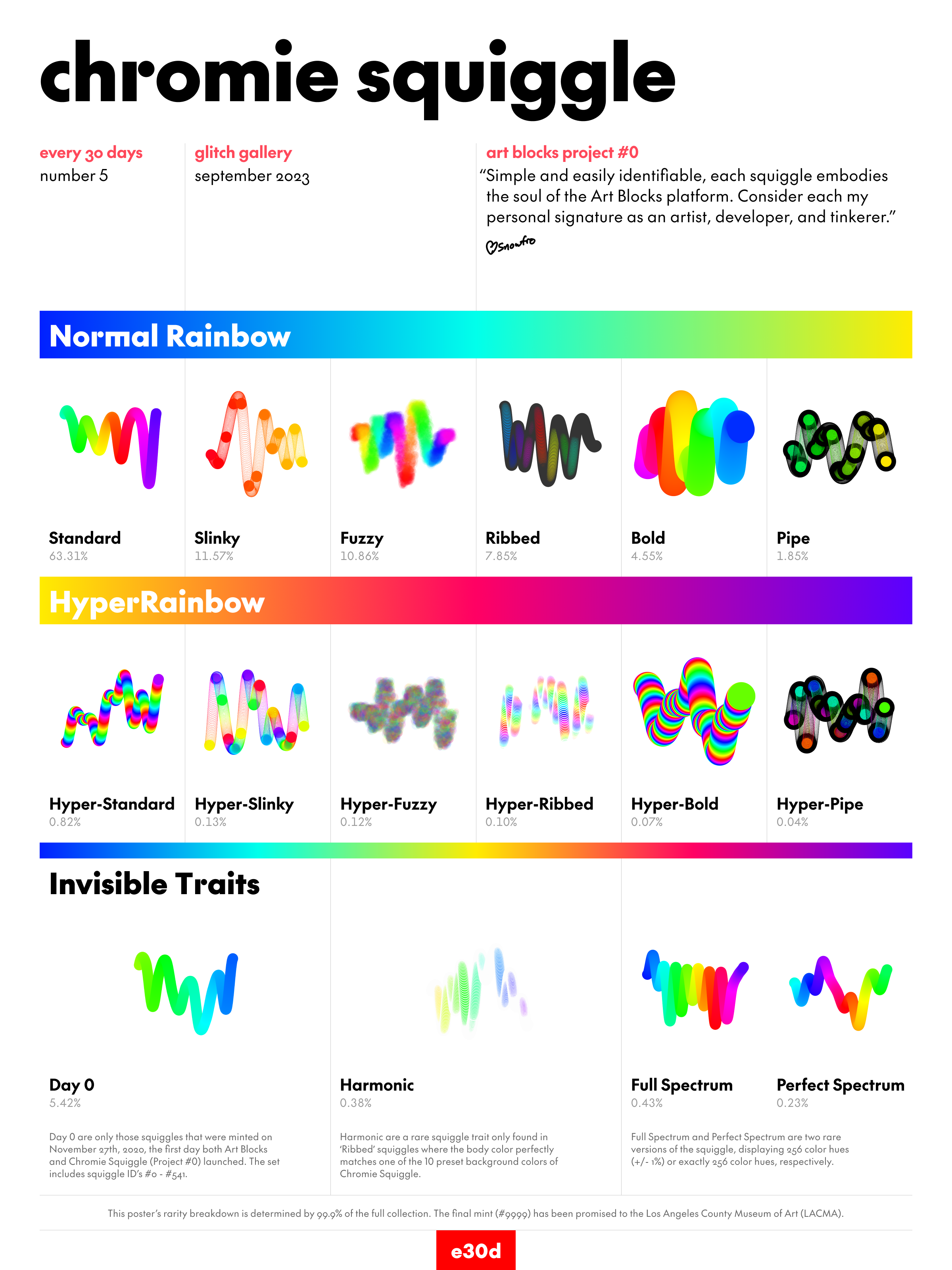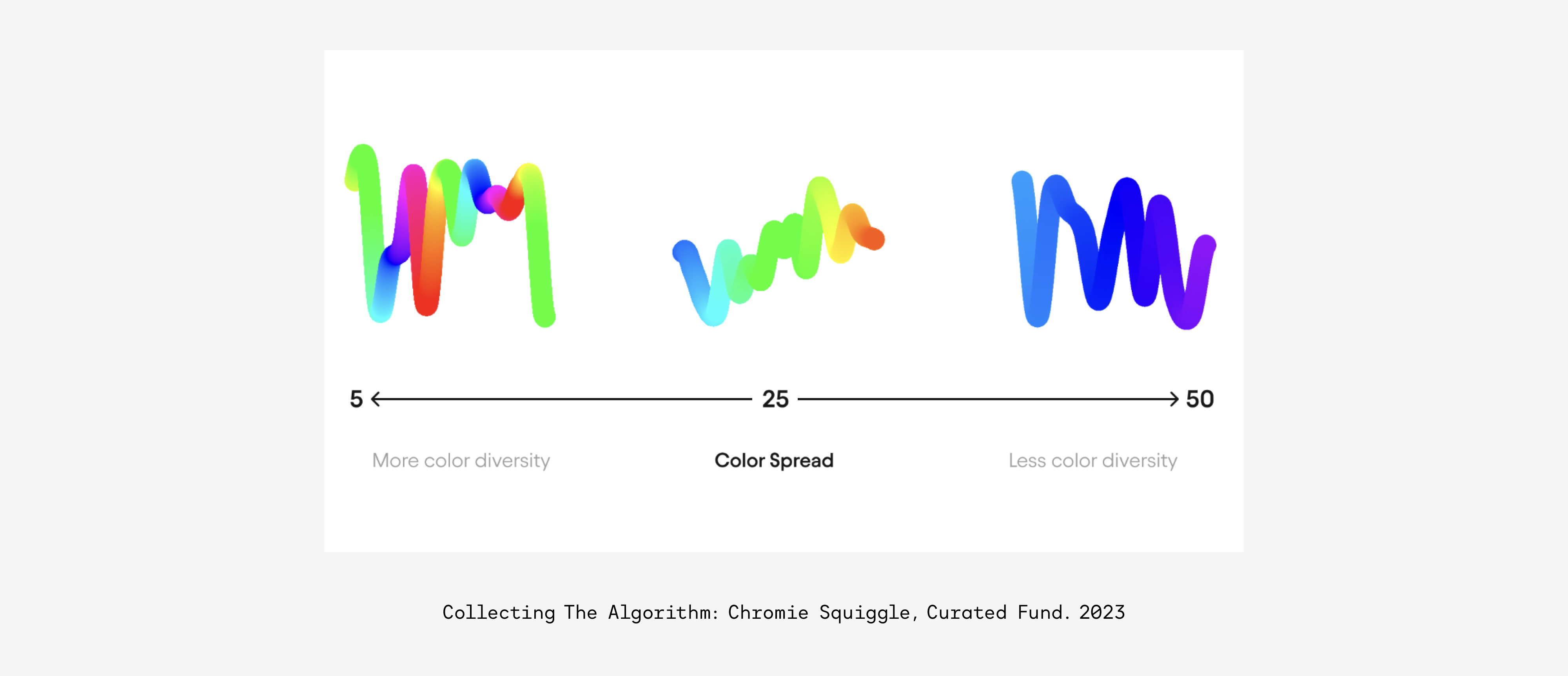Chromie Squiggle (November 2020), the seminal blockchain-based art project by Snowfro, is a collection of 10,000 rainbow squiggles, randomly generated on demand.
Benefiting from a revolutionary technical process developed by Snowfro, each squiggle exists in a state of pure potential before a specific output is minted. Using the original collector’s token hash (a unique string of characters used to verify data integrity on the blockchain) as the input for the squiggle algorithm, the variables of each rainbow line are ultimately decided by the Ethereum blockchain.
As such, Snowfro pioneered a new system for creating generative art that would eventually inspire nearly every category of blockchain-based media.
To celebrate this groundbreaking innovation in generative media, we aim to contextualize the Chromie Squiggle collection, and explore its influence on history from various perspectives.
Life
Erick “Snowfro” Calderon was born in Mexico City in 1981.
At 12, he coded his first software – a calendar reminder app for his personal beeper. For Calderon, it was the moment he understood technology’s unique ability to empower the people around him.
At the University of Texas, Calderon started DigiPrint, a digital photo printing service run out of his dorm room. Leaning into the growing connectivity of the online world in 2001, Calderon paired his physical printing service with an online photo-sharing platform, aiming to find new ways to share photography with others over the internet.
Later, Calderon oriented his creative focus toward the intersection of consumer experiences and technology. He created a snow cone stand to keep students cool during the hot summer months in Texas (giving rise to his online alias, Snowfro). He experimented with programmable LED light bracelets that bands and venues could customize for events and festivals. He explored projection mapping during live concerts, pioneering audience-based art creation that would later find an echo in the architecture of the disruptive Art Blocks platform.
In 2004, he started La Nova Tile, importing Spanish and Italian ceramic tile to the design industry in Houston, Texas. He also transitioned his creative practice into 3D printed objects and sculptures, facilitating his dive and exploration into color theory and composition.
More than a decade later, these unique experiences would converge into a single grand trend line.
Crypto Art Origins
In 2017, a two-person game design studio called Larva Labs launched a digital art experiment on the Ethereum blockchain called CryptoPunks. Living somewhere between generative art piece, collectible, and technical accomplishment, the pioneer project quickly stood out for being the first off-chain generative art project to use blockchains as a format for data storage.
After stumbling across a post in the crypto-focused Reddit communities he followed, Snowfro participated in the original CryptoPunk launch event. He claimed over 30 CryptoPunks, including some of the most rare and desirable objects in the collection.
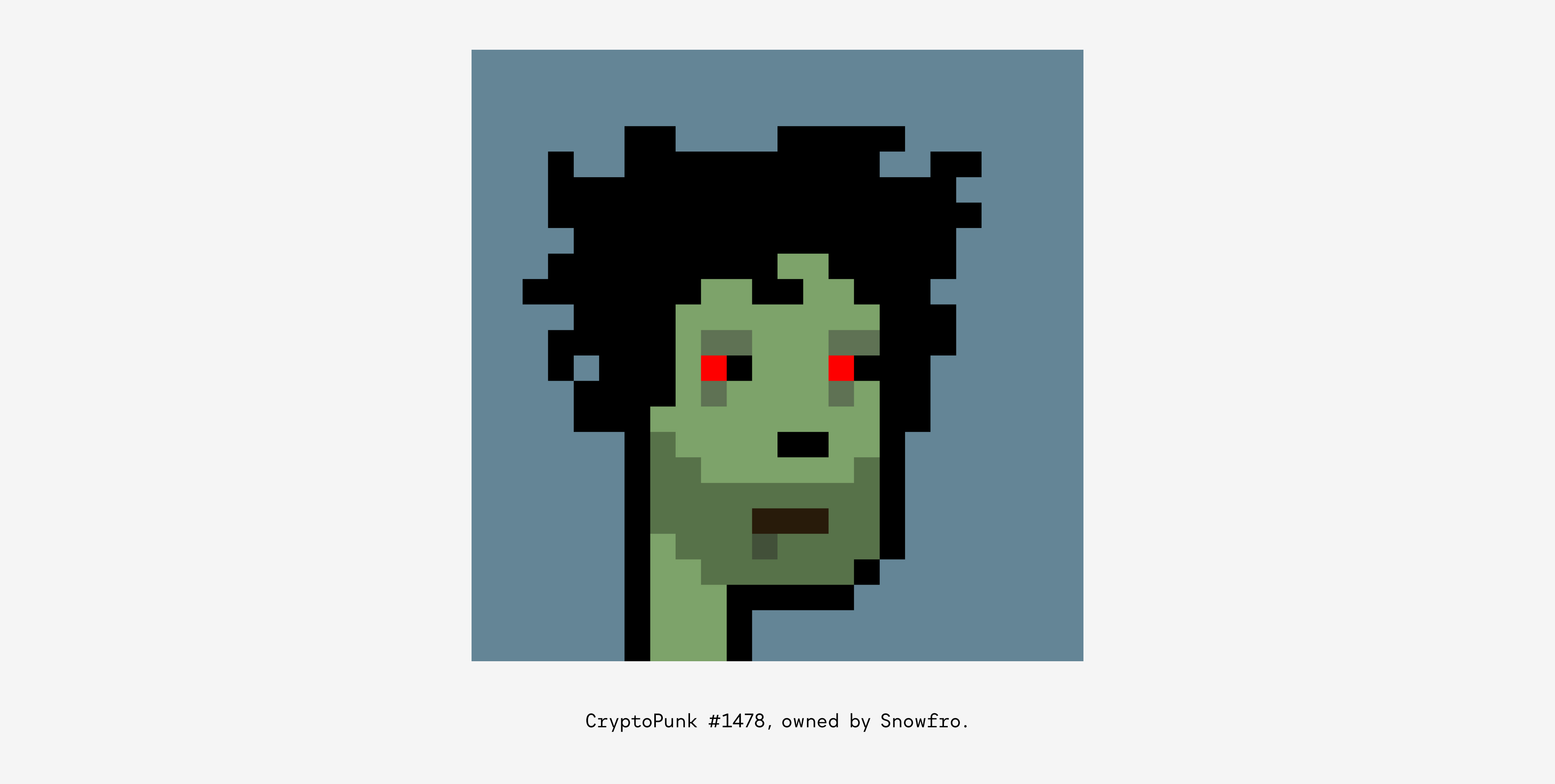
As he reflected on this claiming process, Snowfro wondered:
First, could an entire generative art piece, from artist algorithm to each unique output, live 100% on the Ethereum blockchain?
And second, could a blockchain be used as part of the artist’s full creative process, instead of just the terminal recording format?
Inspired by the technical innovations of the CryptoPunks project and his own passion for generative art, Snowfro began to brainstorm ways to extend Larva Labs’ innovations. Over the following months, he started to share these novel ideas of blockchain-based procedural randomness – first inside the CryptoPunks Discord, and later through public experimentation.
On September 17th, 2018, over two years before Art Blocks would publicly launch, Snowfro tweeted out his innovation that would later inspire a global online movement.
.jpg)
Inspiring The Movement
On November 27th 2020, Snowfro launched Art Blocks, the internet’s first marketplace for on-demand, on-chain, generative art. Chromie Squiggle, the generative script he had been developing for two years, was uploaded to the Ethereum blockchain as Art Blocks Project #0.
A 10,000 piece generative collection, Chromie Squiggle acted as both a generative art homage to CryptoPunks, while serving as an accessible proof of concept for the groundbreaking Art Blocks contracts. Incredibly, and unlike the pre-assembled CryptoPunks collection, squiggles would be procedurally generated in real time, on-chain, with the help of each collector.
CryptoPunks were digital images generated using a computer program, curated by the Larva Labs team, and subsequently uploaded to the blockchain. As a result, collectors could “claim” an individual CryptoPunk by selecting their desired image in 2017. In contrast, each Chromie Squiggle (and the random, probabilistic features that would make it unique) could not exist until it was minted on-demand.
Here’s how it worked:
For .035 ETH (~$30 USD), new squiggle collectors could click a “mint” button that triggered a transaction on the Ethereum ledger. The transaction hash was then referenced as a seed against the on-chain Chromie Squiggle algorithm, populating a unique rainbow squiggle. Up until the moment the transaction processed, both Snowfro and the collector would remain in suspense, unaware of the unique output that might appear on the screen.
Put simply, Snowfro had invented an innovative standard for procedurally generated, on-demand, on-chain generative art.
Further, Snowfro’s Chromie Squiggle demonstrated that complex digital objects could enjoy superior permanence guarantees. For artists, it is prohibitively expensive to create media that has to be stored directly on a blockchain. As a result, many blockchain-based tokens are coded as a “pointer” asset (the code points the holder to view an off-blockchain storage of the media). However, if that off-blockchain storage system is ever deleted, removed, or taken down, the art associated with the ownership token would be lost forever.
Instead, Snowfro insisted on architecting a recording standard that relied on immutability, permanence, and resolution agnosticism. Because all components of the Chromie Squiggle project live securely on-chain, any object in the collection can be privately owned and publicly rendered at any display size with zero quality degradation, for as long as the Ethereum blockchain produces blocks.
In early 2021, a handful of artists and collectors started to recognize the impact of Chromie Squiggle and Art Blocks. The architecture and construction of the collection demonstrated a seismic innovation in the world of digital art, blockchain-based media, and on-chain crypto art. As a result, news of the colorful project spread quickly, attracting an incredible amount of interest.
On January 16th, 2021, Snowfro paused the Chromie Squiggle minter at 9,100 unique iterations, with plans to mint the remaining ~900 in the collection to mission-aligned contributors, charities, and positive organizations over time.
It would take less than one year for the contemporary art world to be put on notice.
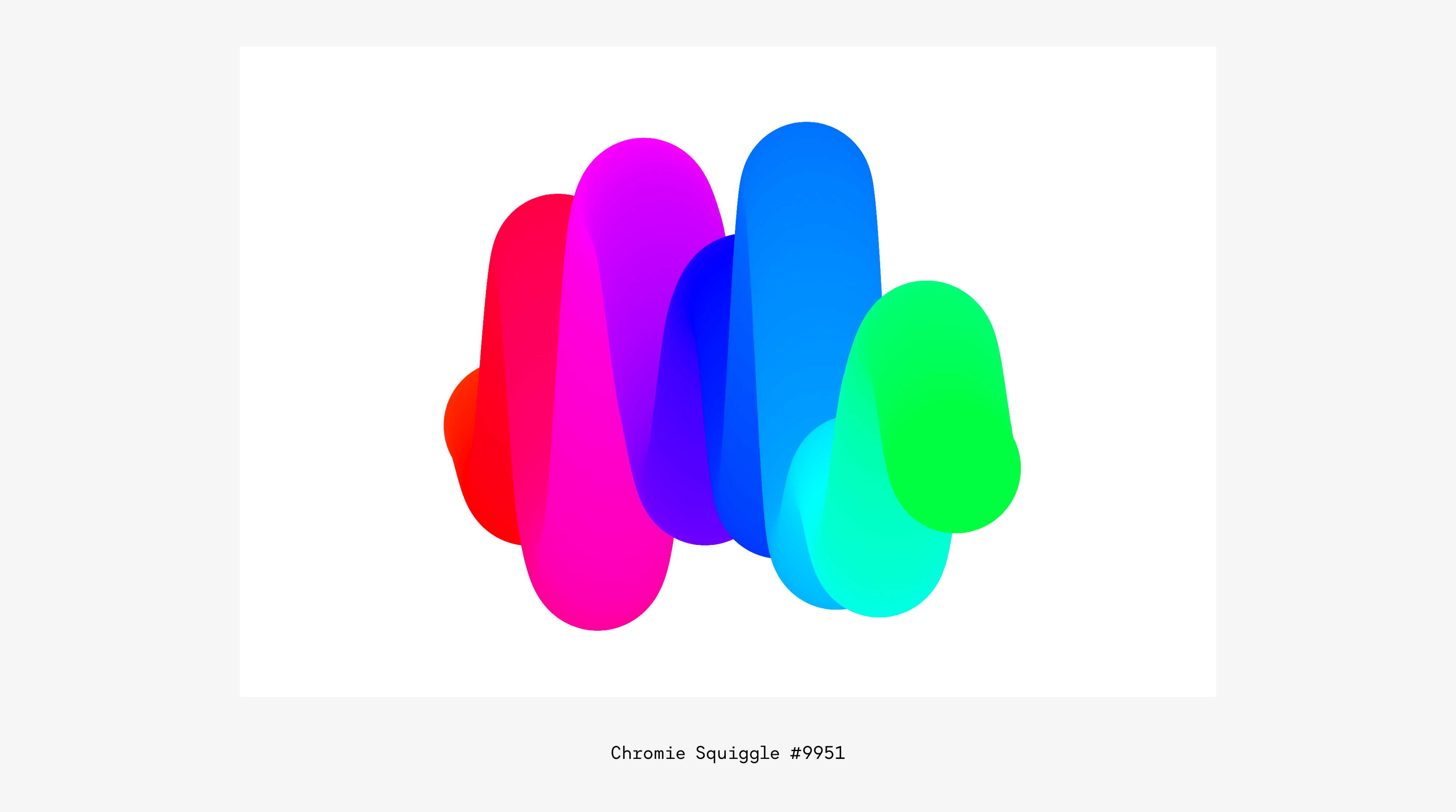
Art
With its minimal composition, Chromie Squiggle displays the richness that can emerge from the interplay of rules within a generative system. The project beautifully underscores the dual nature of generative art: (1) the systematic essence of the algorithm; and (2) the unique singularity of each specific output it produces through randomness.
Allow us to expand on this notion of randomness: to understand the role of the randomly generated token hash is to understand the squiggle. Every character in the hash signifies a value between 0 and 15, and every pair represents a value between 0 and 255. This random assortment of characters will determine the specific “color spread” of each Squiggle. The spread dictates the variety of colors on a Squiggle, with fewer colors appearing at higher values.
Further, each squiggle can take one of six rainbow “types”:
- Normal
- Slinky
- Fuzzy
- Ribbed
- Bold
- Pipe
Each one of the six rainbow types has their own upgraded “HyperRainbow” trait, prefixed with “Hyper-”. If a squiggle belongs to the statistically rare “HyperRainbow” spectrum, the visual output showcases a tight color progression.
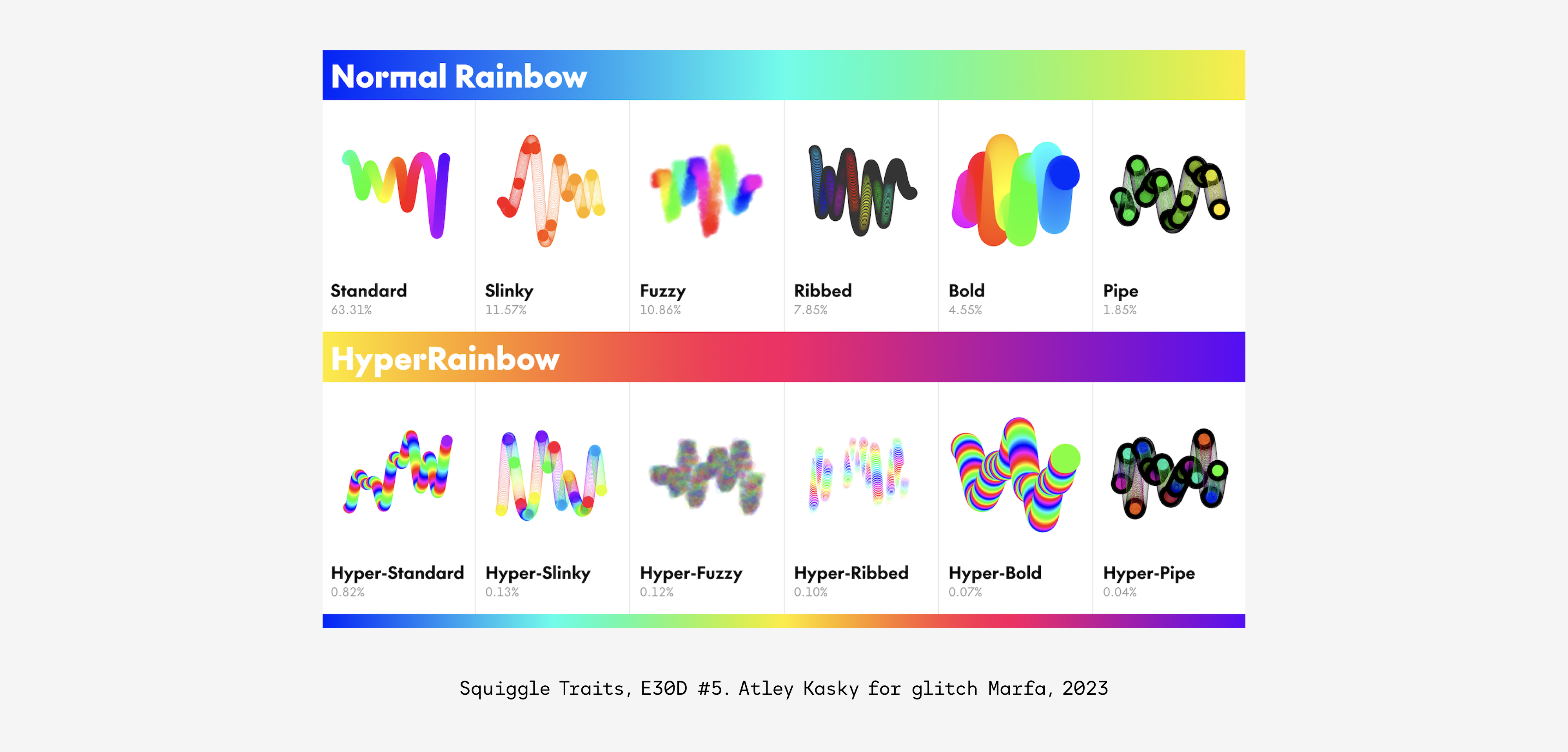
All “Hyper-” variants are highly sought after as collectible assets given their statistical infrequency within the collection; however, the rare Hyper-Bold (only 7 in existence) and even rarer Hyper-Pipe (only 4 in existence) are often considered to be the two rarest “artist intended” trait categories within the Chromie Squiggle collection. An appropriate comparison used by generative art enthusiasts is the “Alien” trait category (only 9 in existence), designed by Larva Labs in the CryptoPunks collection. 2
In early 2021, well-known CryptoPunks collector Von Mises uncovered and subsequently proposed two additional Chromie Squiggle traits. First, the “Full Spectrum” Squiggle (43 in existence), which displays 256 color hues with a variation of +/- 1%. Second, the “Perfect Spectrum” Squiggle (23 in existence) which displays exactly 256 color hues. On January 18, 2021, Snowfro made these important traits the first “invisible” traits to be added to the collection. Community supporters of the Chromie Squiggle have since added more invisible trait categories, which can be found on the Squiggle DAO platform. For example, Day 0 (542 in existence) and Harmonic (38 in existence) are two of these highly collectible traits.
Notably, the invisible trait categories should be understood as distinct from Snowfro’s “artist intended” rarity system, yet symbolic of the probabilistic outcomes created from the on-chain entropy system Snowfro pioneered.

In its entirety, Chromie Squiggle showcases how simple form and color combinations can produce 10,000 distinct outputs – each unmistakably a squiggle, each provably unique.
As such, the project captures the essence of the innovation Art Blocks introduced to the art world. Once uploaded to the blockchain, the artist relinquishes control over the creations that emerge from the algorithm to a large degree. A generative system minted through this setting must therefore be diverse enough to sustain a vast output space while maintaining enough cohesion to prevent undesirable compositions.
And while generative art has faced challenges with suitable storage solutions in the past, Chromie Squiggle, as the inaugural project on the Art Blocks smart contract, showcased how blockchains could serve as an ideal steward for the medium.
Today, Chromie Squiggle stands as one of the most significant and most widely recognized pieces of generative art ever created. Any discussion of the work must begin with the groundbreaking innovation it introduced to the world of generative art, and the lineage of work and artistry that Snowfro inspired as a result.
Yet, one can also see the Squiggle as extending a current in modern and contemporary art – that of reflection and reduction.
.jpeg.jpg)
The move towards abstraction in painting, for instance, can be understood along formalist lines as reducing a work to its quintessential elements to uncover the essence of the medium. Artists from Roy Lichtenstein to Cy Twombly emphasized the brushstroke as the elemental condition for a work to be considered art. In a different way, this approach feels palpable in the paintings of De Kooning, with some of his pieces being counted among the priciest paintings ever auctioned.
.jpeg.jpg)
The squiggle resonates with prior thematization of the brushstroke, a connection that extends beyond mere formal kinship. It is a brilliant visual project – as straightforward or as complex as the viewer wants to enjoy the collection. On the surface, the squiggle appears to be a basic, computer-generated, rainbow line.
So, it forces the viewer to ponder – how can something so simple be art? Be valuable?
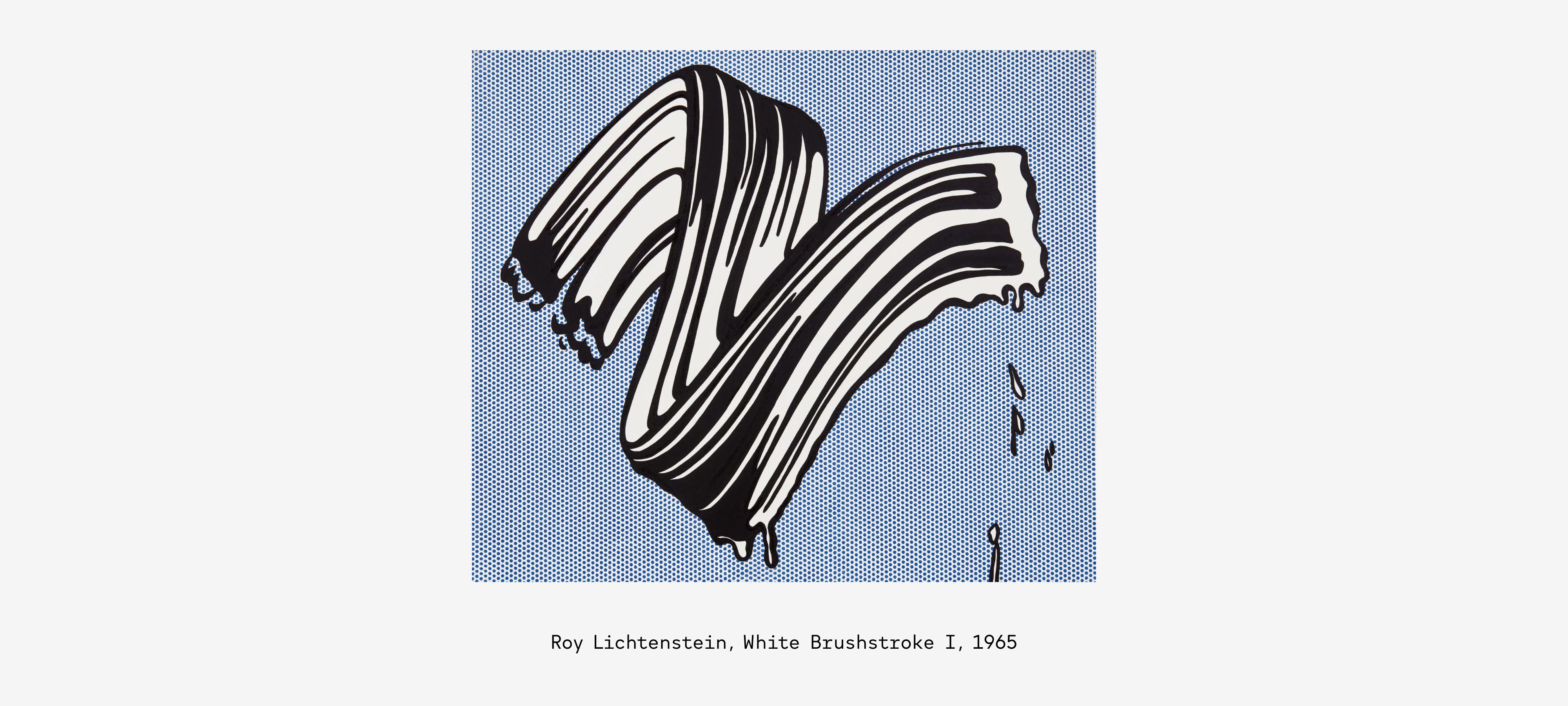
At the same time, Chromie Squiggle is reminiscent of the great modernist experiments in colorism and color theory by painters from Paul Klee to Josef and Anni Albers. Comparable to their exploration of color in abstract compositions, Chromie Squiggle delves into specific variations of a color spectrum using procedural randomness.
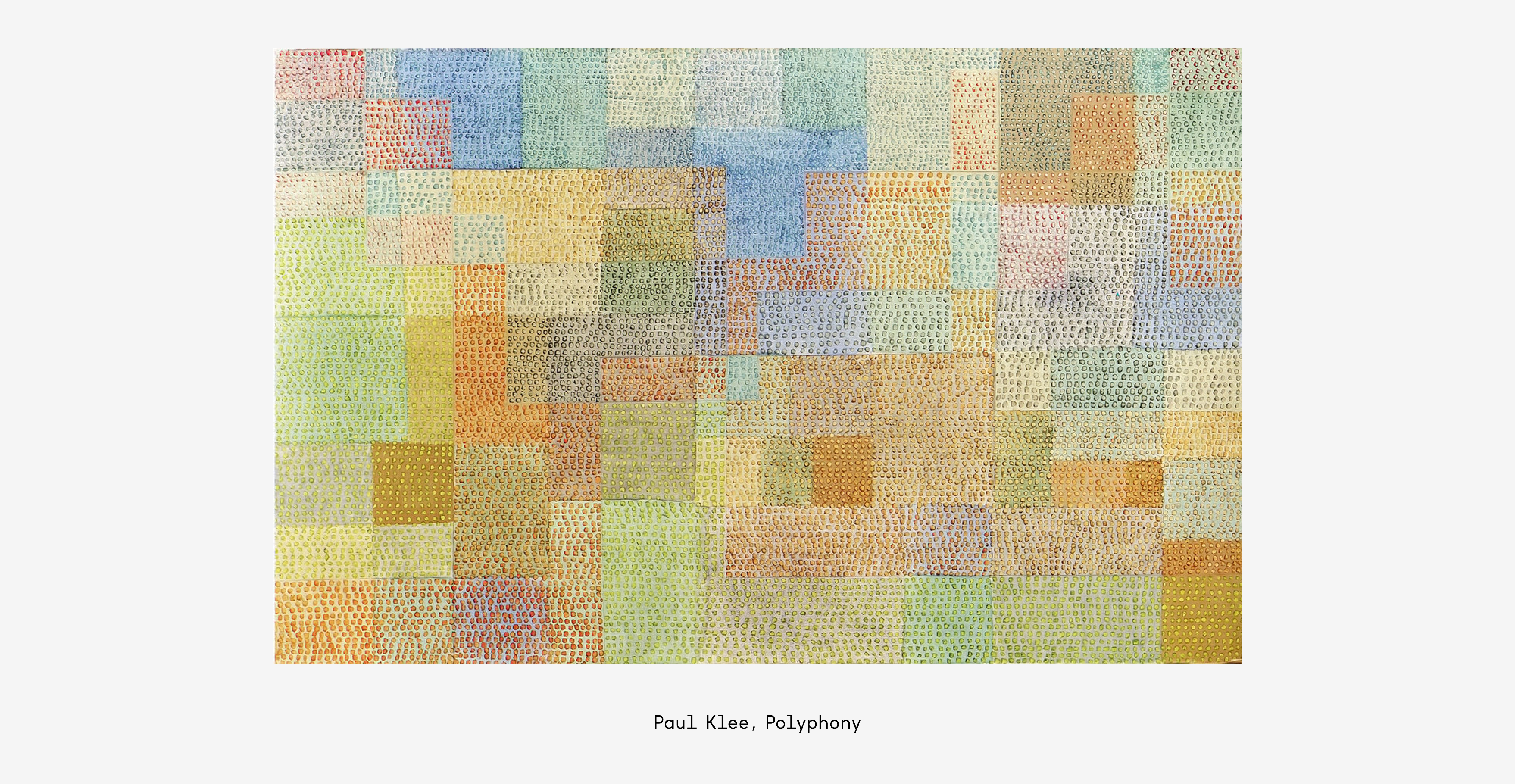
Finally, one can view Chromie Squiggle in relation to minimalist artist Donald Judd. The kinship is more conceptual than aesthetic, even though Snowfro has a personal fascination with Judd and architecture more broadly.
In pieces like “100 Untitled Works In Milled Aluminum,” Judd demonstrates how a simplistic system yields forms strikingly similar, yet distinctly unique. Observing one work, and then another nearly identical but with minute differences, naturally prompts questions about art – what is the meaning of a part in relation to the whole? What changes with variation? How can constraints be the source of creativity? When is a system finished, exhausted or completed?
The design of Chromie Squiggle and the Art Blocks contract raises similar questions about systematization, variability, and uniqueness in rule-based digital systems.
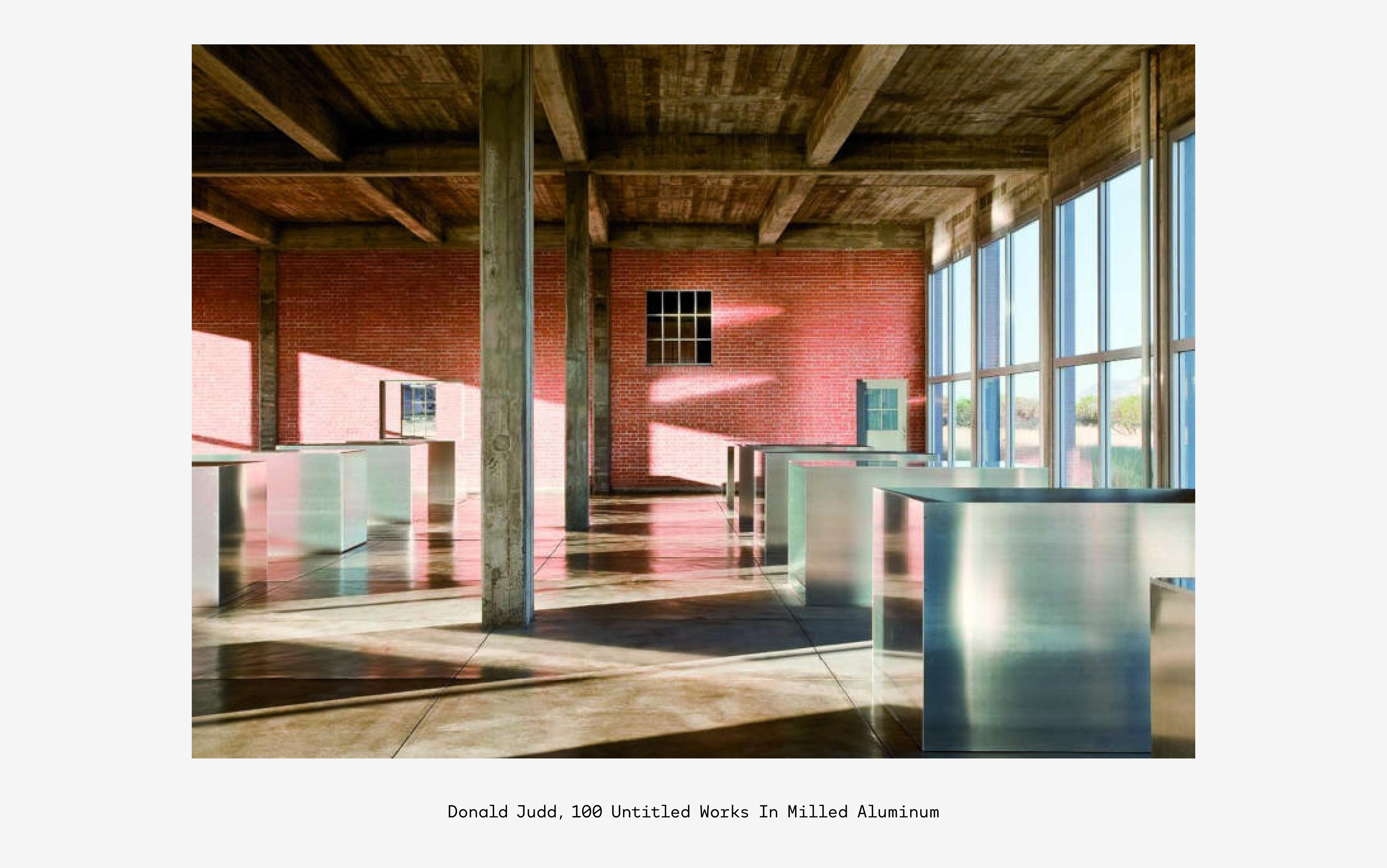
Culture
As Chromie Squiggle continued to mint through January 2021, Snowfro started to spend more time with collectors in both the Art Blocks and CryptoPunks online Discord channels, discussing his technical and design decisions for creating the Art Blocks infrastructure and its originating Chromie Squiggle project.
His ideas spread like wildfire.
Influential artists entered the Art Blocks Discord to learn more each day. The Chromie Squiggle collection began to act as an instructional guide for many of these generative artists. Minting a Chromie Squiggle allowed them to gain a clearer understanding of the parameters for applying these on-chain design constraints in their own generative art projects.
Eventually, this prompted artists to release their own collections on the Art Blocks platform, often projects they had worked on over years. This wave of releases included now-historical collections like Fidenza by Tyler Hobbs, Archetype by Kjetil Golid, Subscapes by Matt DesLauriers, Ringers by Dmitri Cherniak, and numerous others, in quick succession.
Chromie Squiggle’s collection value reflects this legacy. The price of a standard Chromie Squiggle escalated from mere tens of dollars to tens of thousands of dollars today, with many of the rarest iterations commanding prices in the millions of dollars.
Even more astounding than the meteoric price surge is the perception of the squiggle as a de-risked store of value. 3 The collection has maintained one of the most consistent price bands in the market for blockchain-based digital objects, rivaling only that of CryptoPunks. And according to on-chain data, the outputs are priced as exceptionally low-risk collateral in lending markets. In essence, Chromie Squiggle is perceived and priced by the market as a foundational project for the categories of on-chain, procedurally generated crypto media, and using the constraints of blockchains as part of a work’s creation process.
For the artist himself, the iconic quality of the work is closely tied to its capacity to stand for a specific set of values. Snowfro has remarked that his “personal hope for the Squiggle is that it should not only represent art, but a certain culture.[…] We need more kindness, more empathy in the world. And if the squiggle can make a contribution to this, I am satisfied.” 4
Conclusion
Looking back across history, legacy art movements can typically be viewed as reactions to prior art movements and relevant cultural events. Today, blockchain-based generative art encapsulates modern generational values of technology, permanence, individuality, collaboration, and collectivism.
Over time, generative media will continue its inevitable march across industries – from the art hanging in our homes, to the structures we work within, to the furniture we rest on. The growing efficiency of AI-assisted engineering, 3D printing, and generative manufacturing will only accelerate current trends toward programmatic variety.
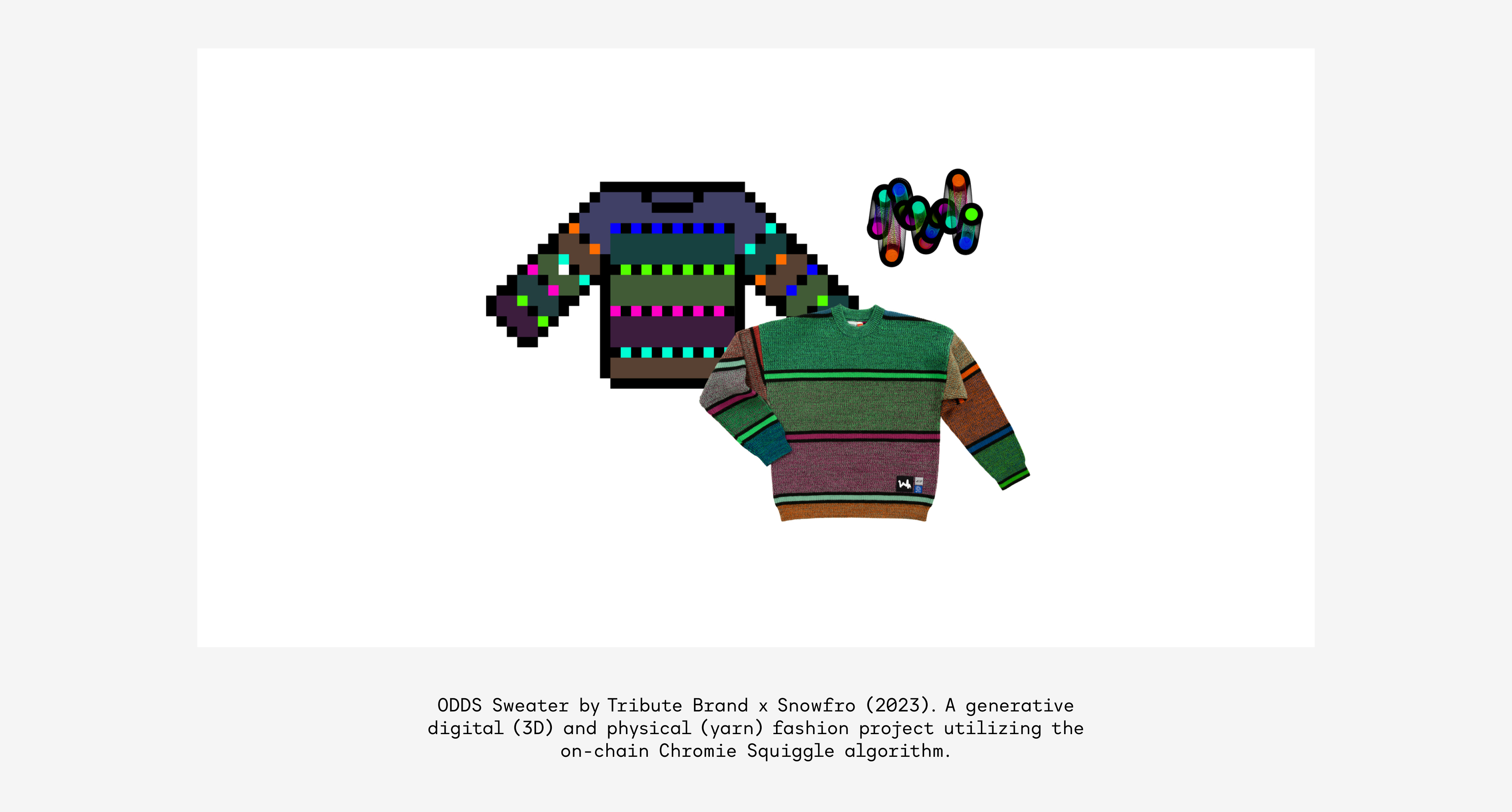
Given its continued (and growing) impact, it is this gallery’s view that on-chain, generative media will be recognized as one of the most influential and important forms of computer art. And over time, the origin of its history will be drawn back to Snowfro’s Chromie Squiggle:
-
The project created innovative technical standards that would inspire an entire industry of artists, coders, and on-chain communities.
-
The project was the genesis project for Art Blocks, a platform which facilitated a new design space for creating and collecting on-chain objects, generated on-demand.
-
The project was an instructional guide for the world’s creative coders to employ verifiable randomness to their algorithmic work.
-
The project is a perfect challenge to the preconceived value of computer art. And more simply, a computer-generated rainbow line itself is a response to what art should be, or even look like.
-
The project’s simple, unique, and colorful aesthetics have empowered the collection to become a true symbol of internet art and culture – proudly used on everything from identity marks to physical objects of fashion.
Today, as both an object of art and an icon of history, Chromie Squiggle represents one of our space’s most influential collections.
And in time, we believe Snowfro will be recognized as one of history’s most important artists.
The E30D object this month, Chromie Squiggle #9951, will be given away on September 29th. Giveaway details can be found on our Twitter. E30D “Full Set” collectors have received one copy of this exhibition poster in advance of the exhibition.
-
Andrew Jiang and Todd Goldberg, Collecting The Algorithm: Chromie Squiggle. https://www.curated.xyz/editorial/collecting-chromie-squiggles ↩
-
Larva Labs, Crypto Punks and Attributes https://cryptopunks.app/cryptopunks/attributes ↩
-
Derek Edwards, “Storing Value in Digital Objects”. ↩
-
Snowfro, interview with Malte Rauch. https://www.brightmoments.io/quarterly/snowfro ↩
.gif)
